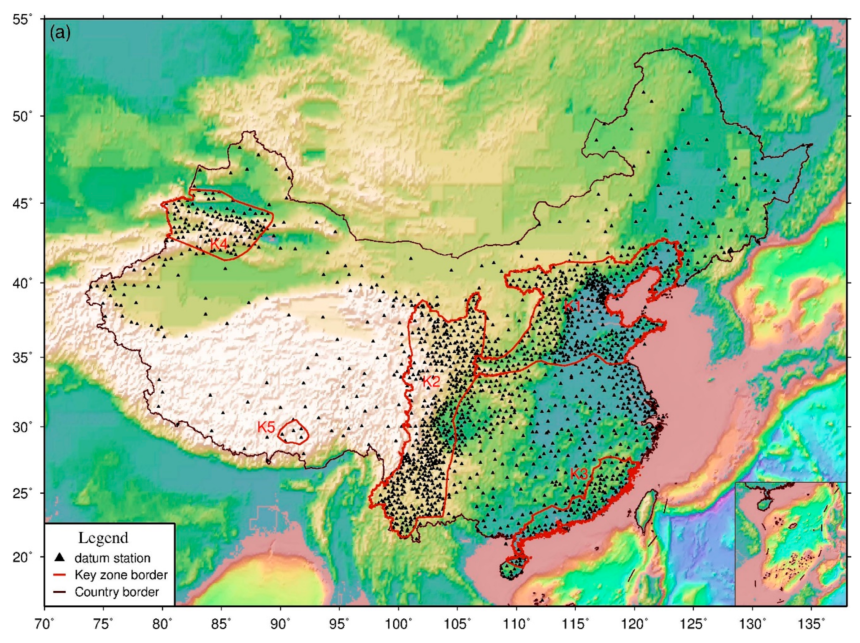China is a vast country, home to over 1.4 billion people and diverse landscapes ranging from China early warning system bustling cities to remote rural areas. With such diversity comes an array of potential risks—natural disasters, environmental hazards, and even health emergencies can arise unexpectedly. That’s where the concept of an early warning system becomes critical.
Imagine having a robust framework in place that not only alerts citizens about impending threats but also empowers them with the knowledge to respond effectively. An effective China early warning system can save lives and minimize damage by providing timely information to those who need it most.
But how does one go about implementing such a crucial system? From understanding what constitutes risk factors to establishing communication strategies, there are multiple layers involved in developing an efficient early warning mechanism tailored for China’s unique challenges. Let’s dive deeper into how we can create this vital safety net for our communities.
Understanding the Importance of China Early Warning System
An early warning system serves as a vital tool in disaster management. It alerts communities about potential threats before they escalate, allowing for timely preparations.
In China early warning system, where natural disasters like earthquakes and floods are common, these systems can be lifesaving. They provide crucial information that enhances community resilience and reduces panic during emergencies.
Moreover, an effective early warning system fosters a culture of readiness. When people know what to expect and how to respond, chaos is minimized. This preparedness not only saves lives but also protects property and infrastructure.
Trust in the system is equally important China early warning system. Communities need confidence in the warnings received so they take them seriously when it matters most. A well-implemented early warning framework builds this trust through consistent communication and reliability over time.
Identifying Potential Risks and Threats
Identifying potential risks and threats is the cornerstone of an effective China early warning system. It begins with understanding the unique landscape that China presents—geographically, politically, and economically.
Natural disasters China early warning system like earthquakes or floods pose significant risks. Additionally, industrial accidents can disrupt communities and economies. Recognizing these hazards early allows for timely interventions.
Political instability or social unrest also needs attention. Monitoring public sentiment through various channels can reveal underlying tensions before they escalate.
Cybersecurity threats represent another critical area. As technology evolves, so do tactics used by malicious actors seeking to exploit vulnerabilities in systems.
By systematically assessing these diverse risks, China early warning system organizations can craft a comprehensive strategy tailored specifically to their environment. This proactive approach not only safeguards assets but enhances resilience against unforeseen challenges too.
Components of an Effective Early Warning System
An effective early warning system consists of several critical components. First, data collection is essential. Gathering information from diverse sources ensures a comprehensive view of potential risks.
Next, risk assessment of China early warning system and tools play a vital role in analyzing the collected data. They help identify patterns and predict future incidents based on historical trends.
Communication channels are another cornerstone. These must be clear and accessible to ensure timely dissemination of alerts to relevant stakeholders.
Technology integration cannot be overlooked either. Utilizing advanced software and hardware enhances monitoring capabilities, allowing for real-time updates.
Community involvement strengthens the system’s effectiveness. Engaging local populations fosters resilience and encourages proactive measures against potential threats. Each component works together to create a robust china early warning system that can save lives and minimize damage during emergencies.
Steps to Implement an Early Warning System
Implementing a China Early Warning System requires careful planning and execution. Start by assembling a dedicated team of experts in risk assessment, data analysis, and emergency management. Their diverse skills will ensure comprehensive coverage of potential threats.
Next, conduct a thorough risk assessment to identify specific vulnerabilities within your region or organization. This step will help tailor the system to address the most pressing concerns effectively.
After that, select appropriate technologies for monitoring and communication. Advanced software tools can analyze data in real-time, enabling timely alerts about impending dangers.
Develop protocols for China early warning system response actions linked with warning signals. Clear guidelines improve coordination during emergencies.
Establish regular review cycles to update procedures based on evolving risks or technological advancements. This ensures that the early warning system remains relevant and effective over time.
Training and Communication Strategies
Effective training is key to a successful china early warning system. Engaging sessions should educate all stakeholders about the system’s purpose and functionality. Use interactive methods to keep participants involved.
Consider role-playing exercises that simulate real-life scenarios. This helps individuals understand their responsibilities during an alert situation. Tailor content based on audience needs, from decision-makers to frontline responders.
Communication strategies must be clear and concise. Establish protocols for sharing information quickly and effectively across all levels of your organization. Utilize multiple channels such as emails, alerts, and meetings to ensure everyone stays informed.
Regular updates are crucial too. Schedule refresher courses to adapt to evolving risks or technologies related to the china early warning system. Foster an environment where feedback is welcomed; it can lead to improvements in both training and communication practices over time.
Testing and Evaluation of the System
Testing and evaluation are critical for the success of a China Early Warning System. It’s not just about setup; it’s about ensuring functionality.
Regular drills can simulate various scenarios. These exercises help stakeholders understand their roles and refine response strategies. Feedback from these drills provides valuable insights into system performance.
Data accuracy of China early warning system is another focus area during evaluations. Analyze past data against real-time alerts to gauge effectiveness. This assessment reveals strengths and weaknesses in the warning processes.
Engagement with local communities enhances testing efforts as well. Gathering input from residents helps identify gaps in communication or understanding, making the system more robust.
Continuous improvement should be a priority too. As new threats emerge, so should your system’s capabilities to address them efficiently. Regular updates based on findings keep the early warning framework relevant and effective.
Benefits and Impact of an Early Warning System
An early warning system significantly enhances safety and preparedness. By providing timely alerts, it enables communities to respond swiftly to potential disasters.
This proactive approach minimizes damage to infrastructure and resources. Lives can be saved through effective risk communication that reaches those in harm’s way.
Moreover, such systems foster resilience within the community. People become more aware of risks and learn how to react appropriately during emergencies.
Economic benefits also arise from reduced recovery costs after a disaster strikes. Investments in an early warning system often prove invaluable when considering loss prevention.
Additionally, these systems facilitate collaboration among various agencies. They encourage information sharing and coordination, leading to more comprehensive emergency management strategies.
The psychological impact is profound as well; knowing there are measures in place provides reassurance to individuals facing uncertainties related to natural hazards or other threats.
Conclusion
An effective china early warning system is essential for navigating the complexities of modern threats and risks. By implementing such a system, organizations can better prepare for potential crises, allowing them to respond swiftly and efficiently when challenges arise.
The importance of being proactive cannot be overstated. With a well-structured early warning system in place, businesses and communities can significantly reduce the impact of unforeseen events. The process involves understanding risks, identifying components necessary for an effective response, and fostering communication among stakeholders.
Training staff is crucial to ensure everyone knows their roles during emergencies. Regular testing keeps the system sharp and ready for action when needed. The benefits extend beyond immediate safety; they encompass long-term resilience against various types of threats.
Investing time and resources into establishing a robust china early warning system pays dividends in preparedness and peace of mind. As global uncertainties continue to evolve, having this framework allows us not only to anticipate problems but also empowers us to act decisively when it matters most.



